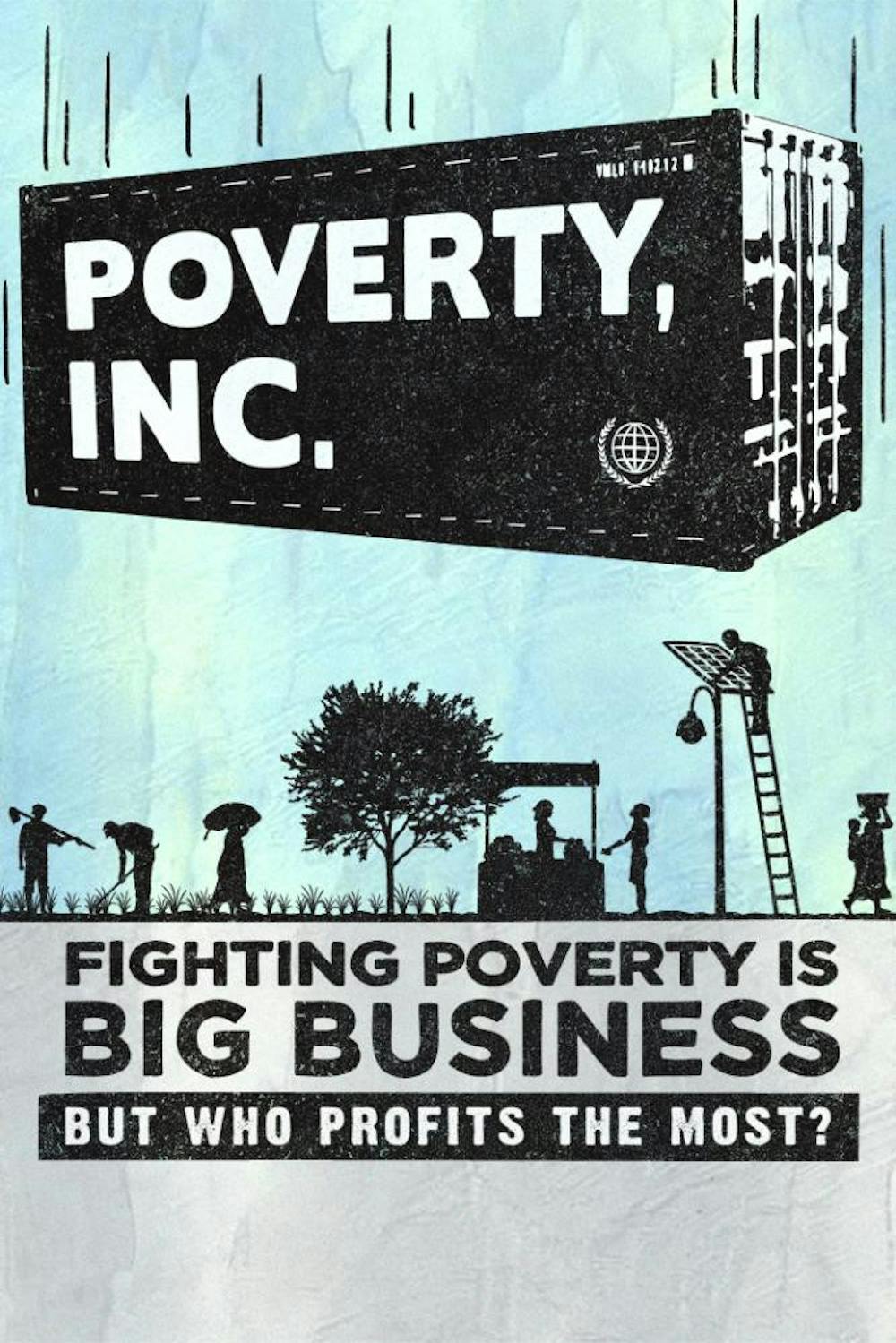The Global Health department held a screening of Poverty, Inc., a 2014 documentary about the state of global aid and charity, at 7 p.m. on Tuesday, April 18, in Dana Auditorium. A panel of political science, education, food studies and religion professors spoke and answered questions after the film ended.
Written, directed and produced by Michael Matheson Miller, Poverty, Inc. criticizes the prominent “aid”-based response to poverty that wealthy countries, particularly the United States, push on poor regions around the world. Focusing on relief efforts in Haiti, Peru and parts of Africa, the film showcases many of the cultural and economic challenges communities face when NGOs and relief organizations begin to flood their economies with outside funds and resources.
Coordinator of Global Health Programs and Professor of the Practice of Global Health Pam Berenbaum suggested the film and organized the screening.
She said that one of the reasons she chose the film was that it focuses on the role that U.S. economic interests play in the ways aid is provided to countries in need.
“I like the film because it reveals aspects of aid and development that are not readily apparent,” she said. “One theme that I wanted to showcase is that the United States’ aid to other countries is largely connected to our own strategic and economic interests. This was true decades ago as well, yet many people cling to the comforting idea that our aid to other countries is purely selfless and benevolent.”
The film first focused on aid efforts in Haiti, where American rice companies flooded the country with cheap rice after the devastating 2010 earthquake, as an example of the trend that U.S. foreign aid efforts tend to perpetuate. The film uses interviews with activists and workers to argue that while provisions of rice may have been helpful in the immediate wake of the earthquake when food was scarce, the continued shipments eventually ruined the portion of the Haitian economy devoted to rice production. Meanwhile, U.S. rice sellers profited.
The film also focused on Tom’s Shoes’ “One for One” program, when the company promised to provide a free pair of shoes to a child in need for every pair sold in the U.S., among other examples of aid initiatives that have hurt local economies for someone else’s benefit. Through these same interviews, the filmmakers argue that people living in poverty possess the desire and ability to pull themselves out of their circumstances, and that aid efforts should provide these people with stepping stones with which to do this, rather than just handing them food or supplies they lack in the moment.
Berenbaum said she hopes that the film helps dispel stereotypes about the people who live in the countries that receive U.S. aid. “Many of the voices in the film were from people in countries that receive our aid, and I hope viewers would agree that the film helps to combat stereotypes about people in these countries,” Berenbaum said. “We have this cherished belief that aid is benevolent, but that belief rests on an assumption that our aid is needed by people who are otherwise desperate or helpless without it.”
Both Berenbaum and Food Studies Professor Molly Anderson, another member of the panel, had criticisms about aspects of the film’s argument. Anderson felt that the film wasn’t effective in distinguishing between emergency aid meant to help in the wake of a specific disaster and longer-term aid.
“The film showed the failure of charity, but it didn’t distinguish between types of interventions, such as humanitarian crisis interventions [immediate responses to disasters such as the Haiti earthquake] versus dumping,” Anderson said. “By not doing that, it perpetuated a misconception that foreign aid ... is ineffectual.”
Berenbaum hopes that, despite the film’s sometimes negative outlook, viewers can recognize that the desire to provide aid almost always comes with good intention.
“I hope that viewers heard the message in the film that people who work for aid agencies or NGOs, by and large, are people who really do want their efforts to improve human welfare – even critics of aid acknowledge this in the film,” she said. “I think it’s important to recognize the human element and avoid demonizing people in the industry, even if you disagree with its end results. Most criticism has the benefit of 20/20 hindsight.”
Berenbaum and Anderson hope that the film’s themes feed into wider discussions about aid and how to partake in it. “I’d like to see a cohesive concentration in development and ample opportunities for students to explore and reflect on how to intervene in communities in useful rather than high-handed or blind ways,” Anderson said. “This could be done through experiential education that has preparatory and debriefing opportunities before and after the experiential component.”
Berenbaum expressed similar sentiments.
“I would like to see us entertain the question of what we, as citizens, should do,” she said. “Aid is an enormous juggernaut, and it is difficult to understand what our individual roles in it can or should be... How can we become part of the solution, rather than part of the problem, and how will we know the difference?”



